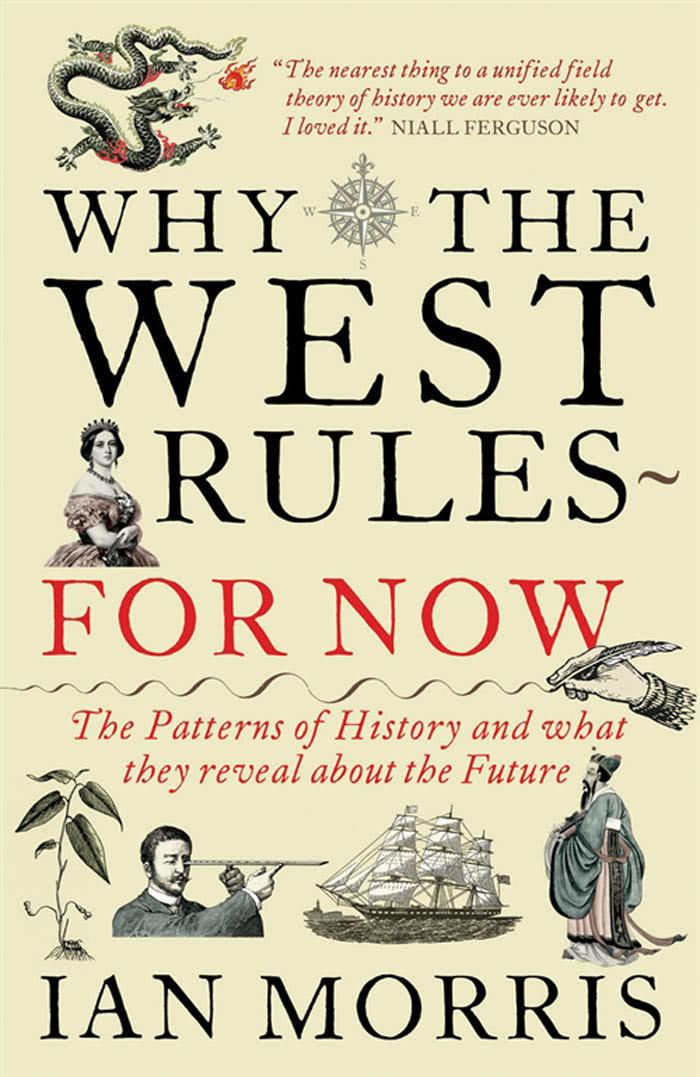8.2 /10 1 Votes8.2
Language English Pages 768 pages Country United States of America | 4.1/5 Goodreads Media type Hardcover, Paperback Originally published 2010 ISBN 978-0-374-29002-3 | |||||||||||||||||||||||||||||||||
 | ||||||||||||||||||||||||||||||||||
Subjects Geography, Social evolution, History Similar Ian Morris books, World history books | ||||||||||||||||||||||||||||||||||
Dr ian morris why the west rules for now
Why the West Rules—For Now: The Patterns of History, and What They Reveal About the Future is a history book by a British historian Ian Morris, published in 2010.
Contents
Content
The book compares East and West across the last 15,000 years, arguing that physical geography rather than culture, religion, politics, genetics, or great men explains Western domination of the globe. Morris' Social Development Index considers the amount of energy a civilization can usefully capture, its ability to organize (measured by the size of its largest cities), war-making capability (weapons, troop strength, logistics), and information technology (speed and reach of writing, printing, telecommunication, etc.).
The evidence and statistical methods used in this book are explained in more detail in Social Development, a free eBook, and by the published volume, The Measure of Civilization.
Morris argues that:
Reception
The book won several literary awards, including the 2011 PEN Center USA Literary Award for Creative Nonfiction and 2011 GetAbstract International Book Award, and was named as one of the books of the year by Newsweek, Foreign Affairs, Foreign Policy, The New York Times, and a number of other newspapers. It has been translated into 13 languages. The Economist has called it "an important book—one that challenges, stimulates and entertains. Anyone who does not believe there are lessons to be learned from history should start here."
The book has been criticized by the Canadian historical sociologist Ricardo Duchesne for offering a diffuse definition of the West which Morris envisions encompassing not only Europe but all civilizations descending from the Fertile Crescent, including Islam, as well as a propensity to level out fundamental differences between the development of the West and the rest, which disregards the singular role of Europe in shaping the modern world. Morris replied, saying that "despite his review’s length, rather little of it takes on my book’s central thesis", and defending his focus on China. The notion that the Middle East and Europe are in the same system was actually introduced by David Wilkinson in 1987.
